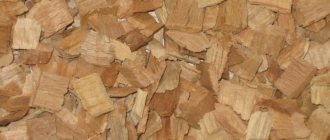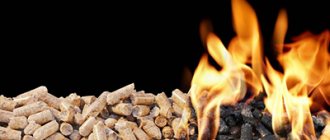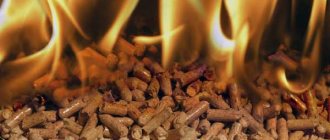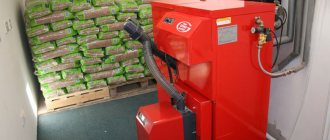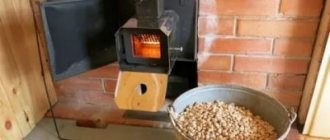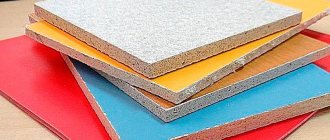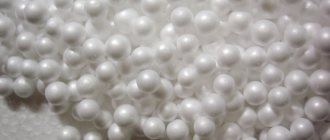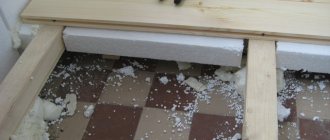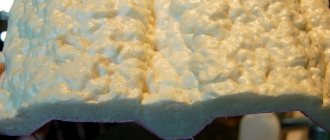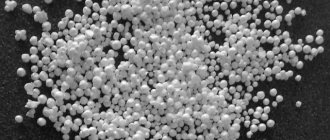Introduction
I am familiar with sawdust drying firsthand; I worked as a technologist in this area for five years. Therefore, what I am going to tell you will probably not be found anywhere, at least in the near future. I tell you and think: why are you doing this Andrey?
After all, such information costs money, this information has been accumulated over the years and is called TRADE SECRET. But then I think that I simply do not have the right not to share some of the information that I have! I started my blog to bring benefit to people, and then such thoughts come to my mind. In short, today I am sharing my experience in drying sawdust for the production of pellets. After reading this article, you will understand the technology of drying sawdust from pellets and dry more than one ton of sawdust with your own hands.
But I’ll say right away that in my book “Typical mistakes of equipment manufacturers when planning pellet production” the information is given more fully and qualitatively since this is my paid product. The volume of the book is not large, but this experience is invaluable. At one time, a German specialist came to us to convey half of the information from this book with a payment of 2000 euros per day. Now I think you understand the value of information.
Drum drying
The production of sublimated fuel raw materials from raw sawdust is possible using drying with hot air forced by fans. The water in their sawdust evaporates by convective heat exchange.
In order for the sawdust to be dried more efficiently, they must be in continuous contact with the coolant: air heated in the heat generator or gases from the firebox.
The most successful solution for implementing this option is to use a drum-type dryer connected to a heat generator. When the drum rotates, a fresh portion of sawdust is constantly introduced into the area of effect of the hot air jet. Special blades inside the drum mix the sawdust, and the moisture evaporates into the environment naturally.
Drying drums are the cheapest of all sawdust drying options with excellent efficiency and ease of design and operation. It is easy to assemble the installation yourself with your own hands, having the appropriate diagrams. The disadvantages of the method include the relatively large dimensions of the drying unit, which can complicate transportation if such a need arises.
Dangers that await you
Of course, drying chips for pellets is technologically much simpler than drying chips for chipboard, the temperatures here are not the same, the complex itself is not so complicated. But the probability of fire, although much lower, is still always there.
Fire and combustion are one of the main dangers of drying sawdust for pellets. Therefore, even at the installation stage of the drying complex, it is worth considering the following points:
- A good fire extinguishing system that will flood the drying drum and cyclones;
- A high-quality fire extinguishing system that will fill the dry chip bunker after the drying complex;
- Reverse for dumping dry chips after cyclones. This function is needed in case of fire in cyclones or on a drying drum, in order to prevent the fire from spreading to the dry raw material bunker.
- If you have a drum dryer, the operator should be able to see the drum rotating and when it stops at high temperatures should be able to quickly pump water into the drum;
- If it is a drum dryer, then there must be thrust rollers or another mechanism that does not allow the drum to move off the support rollers;
- The complex must operate in automatic mode, it must have an archive of equipment operation and temperature restrictions. I described this in more detail in my book “Typical mistakes of equipment manufacturers in the production of pellets”;
- Adjusting the volume of passing air; you will need this parameter when drying raw materials of different humidity levels or at different times of the year. At low air speeds, fires will occur just as at high speeds. The speed is selected individually. In addition, in winter the chips have a lower temperature, and the outside air temperature is much lower. Therefore, the chips need to stay in the dryer longer to dry. This means you need to reduce the volume of air passing through the drum. The air volume can be adjusted by two parameters, one is the number of revolutions of rotation of the exhaust fan by changing the engine speed or replacing the pulleys. The second option is a control damper on the smoke exhauster after the fan impeller;
- Another cause of fire may be large pieces of waste that have entered the drum and come with sawdust. They either do not move forward in the drum, dry out and catch fire, or when they enter the auger for unloading dry chips, they clog this same auger, which again leads to a fire. Solution, if there is lump waste in the chips, be sure to install a sieve in front of the drum.
Drying sawdust
Content
Drying wood waste is, although quite a costly process in terms of material costs, but at the same time it is very justified.
Any waste-free production is more economical than that which results in waste. The latter need to be collected and transported to solid waste landfills, which requires additional costs.
The fact is that when burned, these same wastes make it possible to obtain much more energy, the cost of which is higher. Therefore, drying sawdust, wood chips, shavings and other types of waste from mechanical wood processing is universally popular.
And even drying of wood waste can be carried out using various methods, which depends mainly on the method of supplying the thermal agent, which, in fact, carries out the drying.
Why dry sawdust?
Sawdust is a material that can be considered waste quite conditionally. Since, after special treatment, they can be reused:
- This is an excellent material for operating a solid fuel boiler (especially if you make pellets or fuel briquettes from them);
- Sawdust will perfectly cope with the tasks of insulating the ceiling or attic floor. They are more resistant to sudden temperature changes and changes in humidity than the vast majority of synthetic insulation;
- This material is an excellent organic fertilizer, which not only additionally retains moisture at the roots, but is also capable of fighting a number of weeds;
- If you are engaged in home smoking, then the best quality of the finished product is achieved through the use of sawdust.
These are only the basic, most well-known and accessible options for using sawdust. Therefore, despite certain costs that must be incurred to reduce their moisture content to the permissible carpentry (10-12)%, the result many times justifies the costs incurred.
How to dry
The market demand for dry sawdust explains the presence of several drying options designed for use at home and for industrial purposes (homemade dryers or factory-made products). The first can be made with your own hands, the second can be purchased from the manufacturer.
First of all, the following options for processing raw sawdust should be noted:
- Vacuum drying;
- Aerodynamic;
- Infrared (IR);
- Ultra high frequency (microwave);
- Condensation;
- Options involving drying using convective heat exchange.
The most optimal ratio of the quality of finished raw materials/productivity and the cost of 1 m3 of dry sawdust is demonstrated by convection drying plants (using drum-type devices) and aerodynamic drying. Let's look at them in more detail.
Drum drying
In order to obtain sublimation material from raw sawdust, it is recommended to dry them with hot air supplied by a fan. Existing moisture will be removed from the raw material due to convective heat exchange.
For better and more uniform drying of raw materials (shavings or sawdust), it is necessary to ensure constant contact of the surface of wet sawdust with the coolant. The latter can be flue gases or air heated by a special heat source, a heat generator.
The simplest and most affordable solution to solve this problem is to use a drum dryer combined with a heat generator. The drum, rotating, constantly exposes a new batch of sawdust to the stream of warm air. The special blades inside it contribute to better mixing of the raw material and its more uniform drying. Evaporating moisture is removed naturally.
The advantages of such devices have been proven over the years. They are easy to use, relatively cheap and quite effective.
Unfortunately, it is almost impossible to find domestic drum dryers of proper quality. Therefore, a decision is made to purchase imported ones or to independently manufacture the corresponding device according to drawings available in the public domain.
The only drawback can be considered the size of the installation. In this connection, difficulties may arise with the place of its installation, and if it is necessary to transport the dryer to a new place of operation.
Aerodynamic drying
This option consistently ranks second in popularity and effectiveness. Drying of the raw material is carried out by blowing it with a stream of hot air.
A drying unit of this type consists of several main blocks:
- Heat generator;
- Fan;
- Drying lines;
- Raw material sifter;
- Cyclone;
- Ovens.
The main advantage of this technology is the significantly smaller space that the installation takes up. The main disadvantage is the rather complex, technologically, drying process. It is necessary to carry out a number of preliminary calculations that take into account the total surface area of the particles being processed, the physical characteristics of the raw material (they are different for sawdust of different types of wood), the actual parameters of the dryer and its feed rate.
All this does not allow this method to take first place.
Separately, it is worth mentioning belt dryers, which are very economical and easy to operate. But these drying units are initially designed to process significant volumes of raw materials, and therefore are used exclusively at large enterprises. The high price of belt drying units also speaks in favor of such a solution.
When drying wood waste to the required moisture level, it is important to observe a number of factors:
- dryer parameters;
- the speed of movement of the agent through the illuminated material;
- total surface area of particles of processed materials;
- features and initial parameters of wood waste.
When choosing a dryer for sawdust, you need to study in detail the technical characteristics of each of the models of drying chambers and base them on the needs of your particular production. Because Each technology is suitable in different cases.
Conclusion
When choosing a drying unit and drying technology, you should be guided by your needs and financial capabilities. Otherwise, the cost of drying will be higher than the profit that the company can receive from the secondary use of dry sawdust.
Types of drying complexes for chips
- Recently, with such intensive development of pellet production, new technologies are being actively introduced. And new types of drying complexes are being invented. One of these is the vortex dryer.
- Drum dryers have become classic equipment over a long period of use.
Cross section of a drying barrel. 1-fuel supply system (gas and dust) 2-furnace 3-hog 4-damper and emergency heat removal fan
Drum dryer structure
The drum is a horizontally mounted cylinder made of sheet steel up to 2 cm thick. It can be 1 to 3 meters in diameter. The length of the cylinder is from 6 meters. The device is often installed with a slope of 3-5% on support rollers. One of the videos is equipped with a controller that notifies you when the camera position changes. On one side, a combustion unit is connected to the chamber, on the other side, the unloading chamber receives the material.
The rotation of the drum is carried out using a ring gear fixed in the middle of the chamber, which is connected to the drive gear and drive. The device makes up to 8 full revolutions per minute. Inside, drums of various designs can have a relief, mixers, protrusions that help stir up raw materials, break up compacted lumps, and move them forward to the unloading hatch.
The design of drum dryers involves external loading of bulk materials. For this purpose, screw or scraper conveyors are usually used.
Dryer drum: video diagram of the drying complex
Drying technology and modes
The sawdust enters the drying complex. The temperature at the entrance to the complex ranges from 200 – 500 degrees, at the exit from the complex on drum crushers 60 degrees, on vortex crushers 90.
When the outlet temperature rises above the set point, the volume of incoming raw material is added or the inlet temperature is reduced.
When the temperature drops below the set temperature at the drum outlet, the temperature at the drum inlet is added or the volume of incoming raw material is reduced.
Almost everything has been said about the volume of air; it needs to be selected individually at each production site. Select for winter and summer operating hours.
Options for using sawdust
A thrifty owner will never consider sawdust to be trash, but will think about how it can be used. And here a variety of options for using this environmentally friendly material are possible:
- Sawdust is one of the best materials for heating rooms. You can even make pellets from these wood processing wastes yourself. Or press them into braces, which are perfect for the fireplace or making a fire.
- You can also insulate the ceiling when building a house or cottage using shavings. This material is inferior to all store-bought insulation materials, because analogues are not as resistant to changes in temperature and humidity. For example, synthetic insulation simply breaks down in cold weather, and sawdust helps to avoid such troubles.
- Many avid summer residents know that wood shavings are an excellent, environmentally friendly fertilizer. It is able to retain moisture and even fight weeds.
- Another way to use sawdust is possible even in a city apartment. Wood shavings make excellent bedding for pets. It also absorbs excess moisture and odors. For this purpose, sawdust is also used in private farming, for example, in a chicken coop.
- To increase the amount of smoke when smoking meat, poultry or fish, you can add slow-smoldering sawdust to the wood chips you always use. Each type of wood has a specific aroma that suits “its” product.
Important! If you plan to use wood chips as fertilizer, no special preparation is needed. But for all other purposes you will need a sawdust dryer with your own hands, because fresh wood contains a lot of moisture. Over time, it evaporates and the material decreases in volume. This is especially true for using shavings as insulation.
Video material
As you have seen, such a complex unit as a DIY sawdust dryer is within the capabilities of anyone. By the way, very often craftsmen use old metal barrels as pipes, which are welded together. The main thing is to observe precautions and safety measures during installation and operation to avoid accidents.
